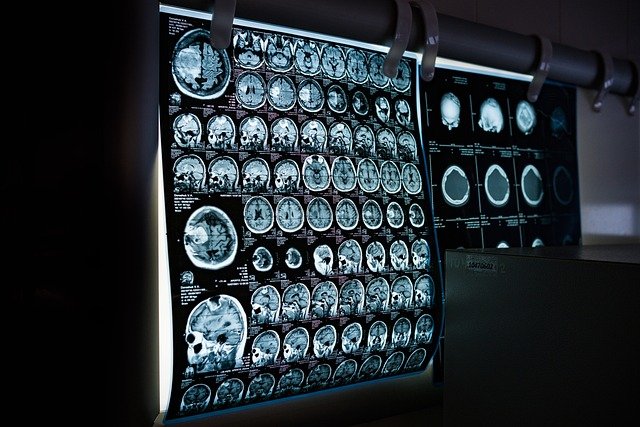Understanding the Early Signs of Parkinson’s: What Your Body May Be Trying to Tell You
Parkinson's disease affects millions worldwide, yet its early symptoms often go unrecognized for years. Many people dismiss subtle changes in movement, mood, or daily functioning as normal signs of aging. However, recognizing these initial warning signs can make a significant difference in managing the condition and maintaining quality of life. Understanding what happens in your body during the earliest stages of this neurological condition empowers you to take proactive steps and seek appropriate medical guidance when needed.

Parkinson’s disease develops gradually, with symptoms that can be so subtle they’re easily overlooked or attributed to other causes. The condition affects the nervous system progressively, primarily impacting movement control, but early signs extend far beyond the commonly recognized tremors. Research shows that non-motor symptoms often appear years before the classic movement difficulties become apparent.
When Small Changes Signal Something Bigger
The earliest indicators of Parkinson’s often manifest as seemingly unrelated changes in daily life. Loss of smell, known medically as anosmia, frequently occurs years before motor symptoms develop. Many people notice they can no longer detect familiar scents like coffee, flowers, or their favorite foods. Sleep disturbances, particularly acting out dreams physically during REM sleep, represent another early warning sign that shouldn’t be ignored.
Constipation becomes increasingly common, affecting up to 80% of people with Parkinson’s even in early stages. Changes in handwriting, where letters become smaller and more cramped, often develop gradually. Voice changes, including speaking more softly or with less expression, may be noticed by family members before the individual recognizes the change themselves.
Common Early Indicators People Overlook
Subtle movement changes frequently go unnoticed because they develop so gradually. A slight tremor in one finger or hand, particularly when resting, might be dismissed as stress or fatigue. Stiffness in shoulders, arms, or legs that doesn’t improve with stretching or movement could indicate early rigidity associated with the condition.
Facial expressions may become less animated, a condition called masked face or hypomimia. Friends and family might comment that someone looks sad or tired when they’re not experiencing those emotions. Walking patterns can change subtly, with shorter steps, reduced arm swing on one side, or a slight shuffle that develops over time.
Mood changes, including increased anxiety, depression, or apathy, often precede motor symptoms by several years. These emotional shifts might be attributed to life circumstances rather than recognized as potential neurological symptoms.
What Actually Happens in the Brain
Parkinson’s disease primarily affects dopamine-producing neurons in a brain region called the substantia nigra. Dopamine acts as a chemical messenger that helps coordinate smooth, controlled muscle movements. As these specialized brain cells gradually deteriorate, dopamine levels decrease, leading to the characteristic movement difficulties.
The process begins years before symptoms become noticeable. By the time movement problems appear, approximately 60-80% of dopamine-producing cells in the affected brain region have already been lost. This explains why early symptoms are often subtle and non-motor related, as the brain initially compensates for the gradual loss of these crucial neurons.
Protein deposits called Lewy bodies accumulate in affected brain cells, contributing to their dysfunction and eventual death. These abnormal protein clumps contain alpha-synuclein, a protein that becomes misfolded and toxic to neurons. Understanding this biological process helps explain why symptoms progress gradually and why early intervention strategies focus on protecting remaining healthy brain cells.
Supporting Your Brain Health Proactively
While there’s no proven way to prevent Parkinson’s disease, research suggests certain lifestyle factors may support overall brain health and potentially slow progression. Regular physical exercise, particularly activities that challenge balance and coordination, shows promise in maintaining motor function and potentially protecting neurons.
Aerobic exercise, strength training, and activities like dancing, tai chi, or yoga can help maintain flexibility, balance, and cognitive function. Studies indicate that people who exercise regularly may experience slower progression of symptoms and better overall quality of life.
Nutritional choices also play a role in brain health. Diets rich in antioxidants, omega-3 fatty acids, and anti-inflammatory foods may provide neuroprotective benefits. Staying mentally active through reading, puzzles, social engagement, and learning new skills helps maintain cognitive function and neural connections.
Quality sleep becomes increasingly important, as the brain performs crucial maintenance and repair functions during rest. Managing stress through relaxation techniques, meditation, or counseling can also support overall neurological health.
When to Seek Professional Guidance
Recognizing when subtle changes warrant medical evaluation requires careful consideration of symptom patterns and their impact on daily life. If multiple early signs persist for several weeks or months, consulting a healthcare provider becomes important. This is particularly true when symptoms begin interfering with work, social activities, or personal relationships.
Neurologists specializing in movement disorders can perform comprehensive evaluations to determine whether symptoms indicate Parkinson’s disease or other conditions. Early diagnosis allows for prompt treatment initiation, which can help manage symptoms and potentially slow disease progression.
Keeping a symptom diary helps healthcare providers understand patterns and changes over time. Recording when symptoms occur, their severity, and any factors that seem to improve or worsen them provides valuable diagnostic information.
Family history of Parkinson’s disease or related neurological conditions increases risk and may warrant earlier or more frequent medical monitoring. Genetic counseling might be recommended for individuals with strong family histories of the condition.
Recognizing early signs of Parkinson’s disease empowers individuals to take proactive steps toward maintaining their health and quality of life. While the prospect of a neurological condition can feel overwhelming, early awareness enables timely medical intervention, lifestyle modifications, and support system development. Understanding these subtle warning signs helps distinguish between normal aging processes and potentially significant neurological changes that deserve medical attention.
This article is for informational purposes only and should not be considered medical advice. Please consult a qualified healthcare professional for personalized guidance and treatment.




